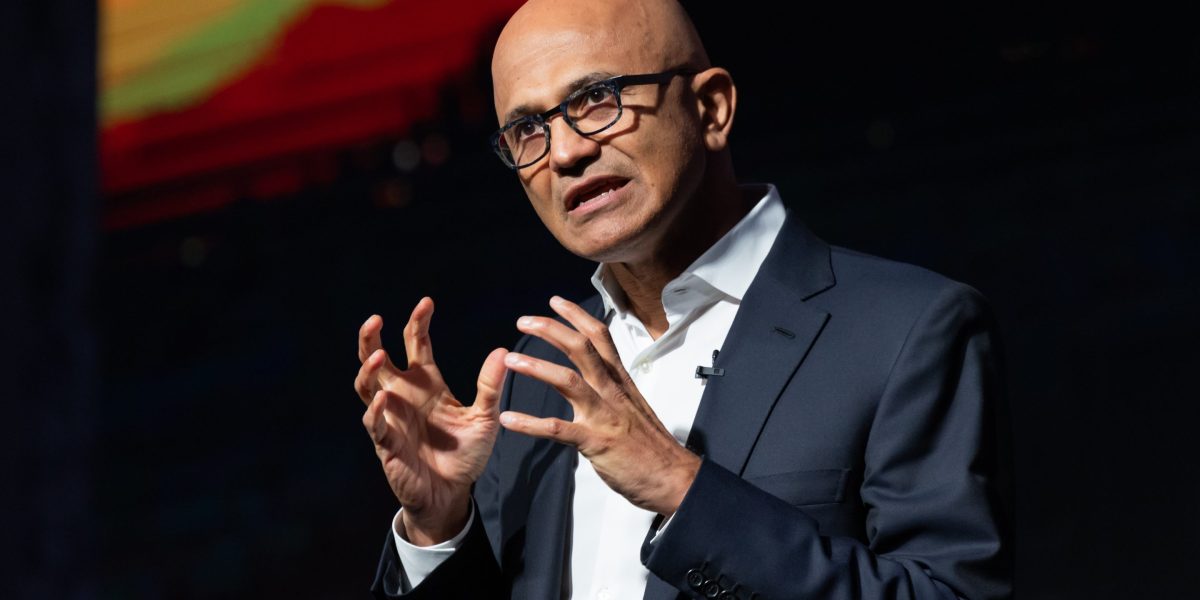Like many of his peers, Satya Nadella, the CEO of Microsoft, is enthusiastic about leading the way into an AI-driven technological era. However, he is not content with relinquishing control over the outcome of this ambition.
To address this concern, Nadella has tasked his team with developing Microsoft’s own powerful silicon chip to disrupt a market that has predominantly been dominated by Nvidia.
During the Ignite conference, Nadella introduced Microsoft’s inaugural custom silicon, Azure Maia 100, following his attendance at the Cricket World Cup match between India and New Zealand.
This internally crafted AI “accelerator,” a sophisticated term for a type of semiconductor, is tailored for deployment in high-bandwidth data centers that support large language models (LLMs).
The prevailing AI chip market, currently dominated by Nvidia’s A100 and H100 processors, may face competition from Maia in the near future.
Nadella announced on Wednesday that “we are currently evaluating this with numerous AI services, including the GitHub Copilot.” “Initially, we will deploy Maia prototypes internally to support our own workloads, eventually extending it to cater to third-party demands.”
Among the potential clients is Sam Altman from OpenAI, the CEO of ChatGPT, who views Microsoft as a significant investor. Altman has been reliant on Nvidia’s limited resources to power his AI chatbot thus far.
During a presentation on Wednesday, Altman expressed his excitement about Microsoft’s Maia project and their collaborative efforts to refine and test it with their models.
Nadella envisions a future where AI, characterized by advanced generative capabilities akin to human behavior, ushers in an “Age of Copilots” for the workforce.
The Maia device, equipped with cutting-edge technology for semiconductor circuit miniaturization, boasts 105 billion transistors and 5-nanometer nodes. It also features an innovative “sidekick” thermal management system that replaces conventional fans with advanced liquid cooling for enhanced performance.
Nadella emphasized that “AI workloads necessitate infrastructure that significantly differs from traditional cloud setups.”
To address this, the Maia cards are integrated into specially designed server racks that can be seamlessly integrated into existing Microsoft data centers without the need for substantial additional investments, alongside its complementary components.
Elon Musk and other customers have encountered challenges meeting Nvidia’s requirements due to the Azure Maia 100 device’s capabilities, which now completes Microsoft’s framework for handling the intensive workloads associated with AI training and inference.
By adopting a bespoke approach that oversees every aspect, including software, client enclosures, and cooling systems, Microsoft ensures that the whole is greater than the sum of its parts.
Altman of OpenAI believes that “OpenAI’s end-to-end AI structures, meticulously optimized down to the silicon with Maia, pave the way for training more robust models and making these innovations more cost-effective for our clients.”
Despite facing difficulties in meeting the demands of clients like Tesla’s Elon Musk, Nvidia’s founder and CEO, Jensen Huang, seems receptive to the evolving landscape and the collaboration with Microsoft in various technological domains.
While Microsoft is not entirely transitioning to Maia, Nadella has committed to offering Huang’s latest AI training chip, the H200 tensor core GPU, to Microsoft server clients starting next year.
Nadella expressed astonishment at the rapid progress of ChatGPT, stating, “It’s hard to believe that ChatGPT has only been available for a month. We are at a turning point. Undoubtedly, this marks the era of copilots.”
For insights on how AI is shaping the future of business, subscribe to the Eye on AI newsletter. Stay informed.






